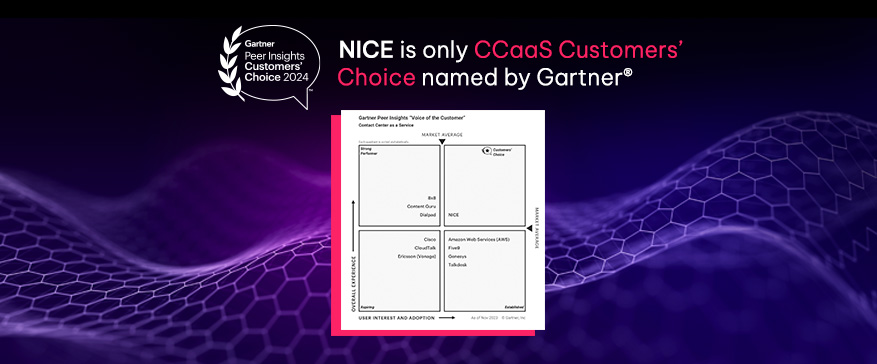Higher Response Rates, Deeper Insights Help PSEG Identify Training Opportunities and Improve CX
How Does RTT Calling Work?
RTT calling relies on modern telecommunication networks and devices to facilitate seamless, real-time communication. Here’s how it works:- Real-Time Transmission: RTT transmits text immediately as you type, allowing both parties to view each letter, word, or correction as it is entered. This real-time interaction eliminates delays and enables dynamic conversations.
- Simultaneous Voice and Text: RTT supports both voice and text communication during a call. Users can switch between voice and text or use both simultaneously, enhancing the flexibility of conversations. RTT calls include an audio stream, allowing users to manage their audio experience by muting or unmuting their microphone.
- Network and Device Compatibility: RTT is supported on modern cellular networks like VoLTE (Voice over LTE) and requires compatible smartphones or devices. It uses digital communication protocols to ensure text and voice data are transmitted efficiently.
- No Additional Hardware: Unlike older technologies such as TTY, RTT does not require separate hardware. It is built directly into smartphone operating systems and telecommunication networks.
Why Use RTT Calling?
RTT calling offers a range of benefits that make it ideal for various use cases, from accessibility to practical day-to-day communication. Here’s why RTT is valuable:Accessibility for Individuals with DisabilitiesFor the Deaf or Hard of Hearing: Accessibility features like RTT enable individuals who cannot hear to communicate effectively via text during phone calls. It eliminates the need for third-party relay services, allowing direct communication.For Those with Speech Impairments: Individuals who have difficulty speaking can type their messages in real time, ensuring clear communication.Emergency CommunicationRTT is especially valuable in emergencies where voice communication isn’t feasible. For example:- During medical emergencies when speech is impaired.
- In situations where speaking aloud could be dangerous, such as during a home invasion.
- RTT is supported by emergency services like 911 in many regions, ensuring people can contact help when needed.
- RTT allows users to convey complex information with greater clarity.
- It is ideal for businesses or personal scenarios where voice communication may not be clear due to background noise or accent differences.
- Unlike instant messaging apps, which allow for asynchronous conversation, RTT provides a real-time, interactive texting experience akin to a phone call, enhancing message delivery and engagement.
Benefits of RTT Calling
RTT calling is an innovative technology that addresses several limitations of older communication methods. Here are its key benefits:Real-Time CommunicationRTT eliminates delays in text-based communication. As soon as a character is typed, it appears instantly on the other person's screen during a call, allowing immediate interaction.Seamless IntegrationRTT is integrated into most modern smartphones, eliminating the need for additional devices or apps. Users can access RTT settings in their phone app to enable these features. It works through your existing phone’s settings and cellular plan, making it convenient to use.Flexibility with Voice and TextUsers can toggle between text and voice or use both simultaneously during a call. This makes RTT highly adaptable to different situations, whether you need to speak, type, or both.Improved AccessibilityRTT ensures that individuals with hearing or speech difficulties can communicate independently without relying on relay services or specialized hardware like TTY devices.Better Emergency SupportRTT is a reliable option for contacting emergency services when speaking aloud is not possible. It ensures that communication is immediate and clear, which can be life-saving in critical situations.RTT vs. TTY: What’s the Difference?
RTT and TTY are both text-based communication technologies, but RTT is the modern replacement for TTY, offering significant advancements:- Transmission Speed: RTT transmits text in real time, character by character, while TTY sends messages in chunks or only after typing is complete.
- Device Compatibility: RTT works seamlessly on modern smartphones and networks, while TTY requires a separate device.
- Simultaneous Voice and Text: RTT supports both text and voice communication during the same call, whereas TTY only supports text.
- Ease of Use: RTT is built into smartphones, making it much easier to use than TTY, which requires setup and specialized equipment.
How to Enable and Use RTT Calling
Enabling RTT on your smartphone is simple, provided your device and carrier support the feature. Here’s how to set it up and use it effectively:Step 1: Check CompatibilityBefore enabling RTT, confirm that your phone and carrier support this feature. Most iPhones and Android devices, along with major carriers like Verizon, AT&T, and T-Mobile, offer RTT functionality.Step 2: Enable RTT on iPhone- Open the Settings app.
- Go to Accessibility > RTT/TTY.
- Toggle RTT on.
- Customize settings, such as whether to use RTT for all calls or only when needed.
- Open the Phone app.
- Tap the three-dot menu and select Settings.
- Navigate to Accessibility or RTT Settings.
- Enable RTT Calling and configure preferences.
- Dial the number you wish to call.
- When the call connects, an RTT interface will appear.
- Use the on-screen keyboard to type your messages, which the recipient will see in real time.
- You can speak, type, or use both modes during the call, depending on your preferences.
How RTT Calling Works with Emergency Services
RTT is an invaluable tool for contacting emergency services, particularly when speaking aloud is not an option. Many regions, including the United States, support RTT for 911 calls. Here’s how it works:- Direct Communication: RTT allows you to text directly with emergency dispatchers in real time. Dispatchers can see each character as you type and respond immediately.
- Accessibility Compliance: Emergency services are required to accommodate RTT under accessibility regulations, ensuring people with disabilities have equal access to help.
- Practical Use Cases: RTT is ideal in situations like domestic violence, medical crises, or natural disasters, where voice communication may be impractical or unsafe.
Use Cases for RTT Calling
RTT calling is versatile and applicable in various contexts:- Accessibility for Disabilities: People with hearing or speech impairments can communicate independently and efficiently.
- Emergency Scenarios: RTT ensures clear and immediate communication with emergency services.
- Professional Communication: Businesses can use RTT to support customers who prefer text-based interactions.
- Travel and Hospitality: Hotels, airlines, and travel companies can offer RTT as an accessible communication option for their customers.










